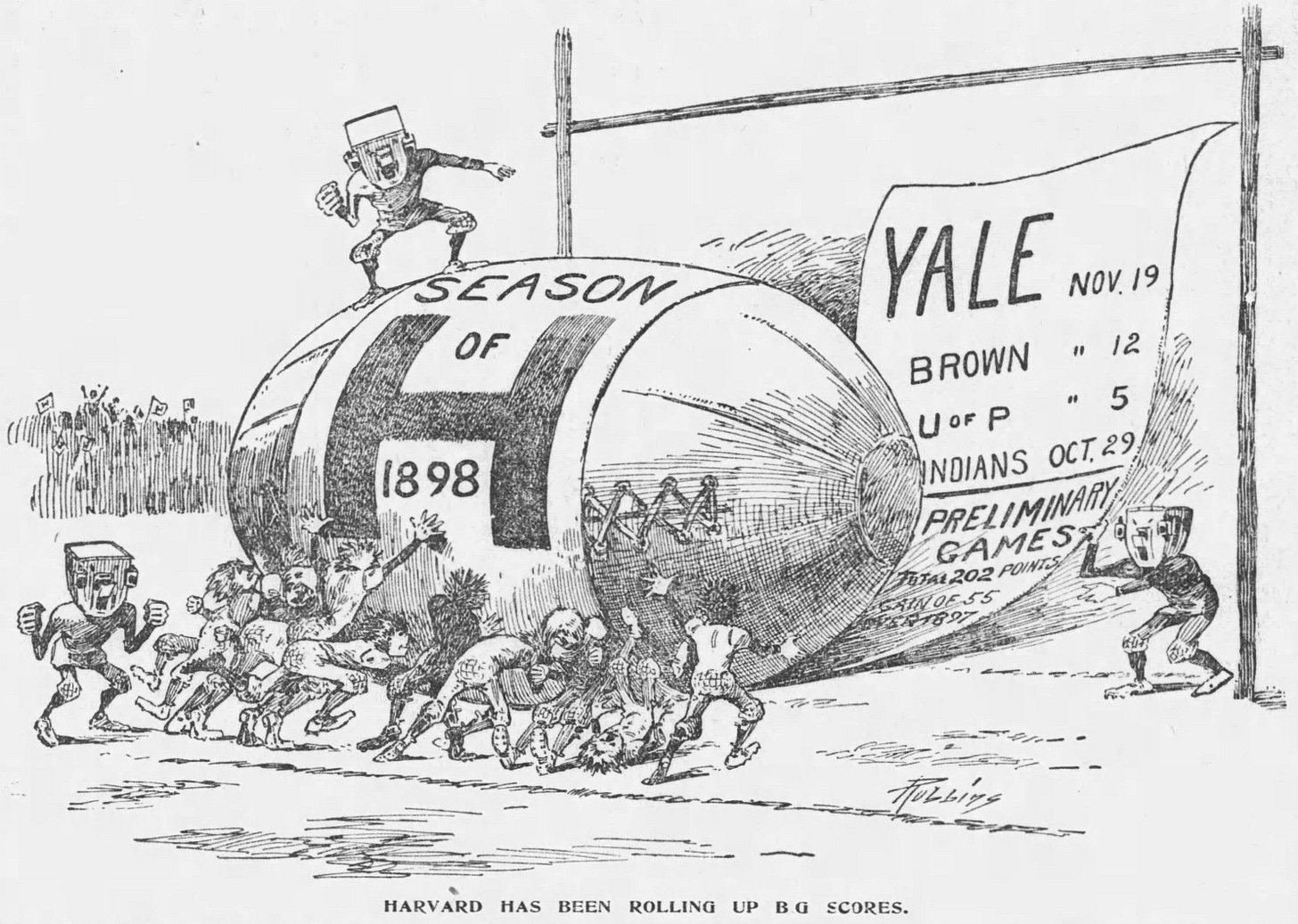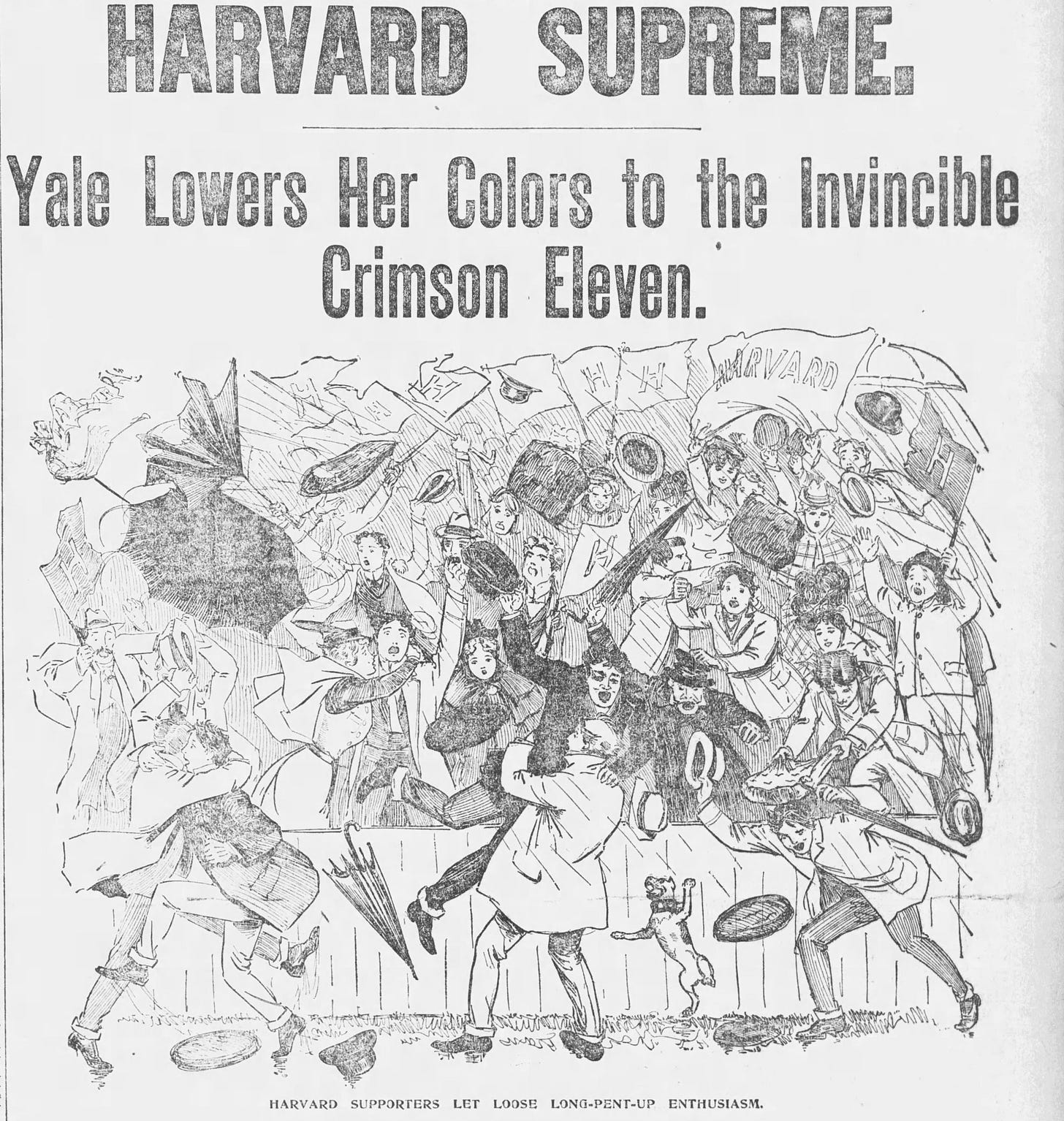Today's Tidbit... When Harvard Rained Supreme
After Harvard beat Carlisle, 11-5, in the eighth game of the season, Harvard’s opponents had scored only 13 points on the Crimson during the 1898 season with Penn, Brown, and Yale left to play.
The Crimson team included two future College Football Hall of Famers. One, quarterback Charles Daly, became a three-time All-America at Harvard before entering West Point upon graduation and playing two more years there. He later coached Army for eight years in a stretch interrupted by WWI. The other Hall of Famer was Percy Haughton, a tackle who returned to Cambridge in 1908, coaching Harvard to four national titles over six years.
Harvard’s 1898 team was also a juggernaut. The week after the illustration above was published, they faced Penn, took them down 10-0, and then won 17-6 over Brown.
That left the final game at Yale, a team whose only loss had come at Princeton the week before. Could Harvard beat Yale, a team with a seven-game win streak over Harvard?
Game day broke with a cold rain falling in New Haven, conditions that continued all day. Special trains disgorged ill-equipped passengers from New York, allowing the New Haven shop owners to empty their shelves of every raincoat, oilskin, or other protective wear.
Inside packed Yale Field, Harvard received the opening kick and marched the field's length for a touchdown, missing the kick following a puntout. Still, the 5-0 lead felt good and felt better when it became an 11-0 lead by the half and a 17-0 lead early in the second stanza. The rain may have hindered play, but not that of the boys from Boston
Yale, who struggled to move the ball all day, caught fire in the last minutes, pushing the ball deep into Harvard territory. Told there were 30 seconds left on the clock, Yale attempted a field goal to avoid the shutout but missed, leaving Harvard's captain Dibblee to pick up the game ball and take it home to Cambridge.
Years later, in 1898, several services retroactively named Harvard football national champion.
Football Archaeology is reader-supported. Click here to buy one of my books or otherwise support the site.



